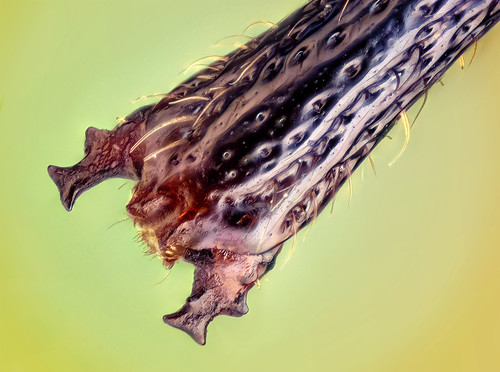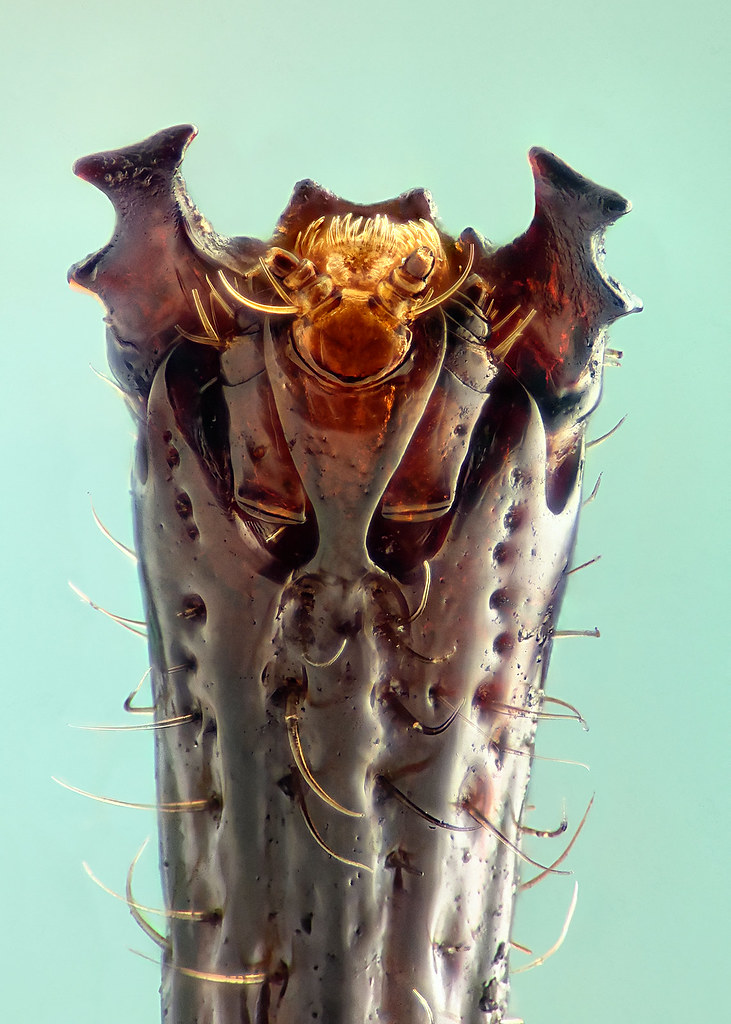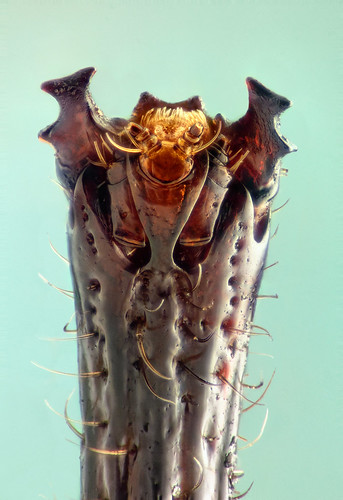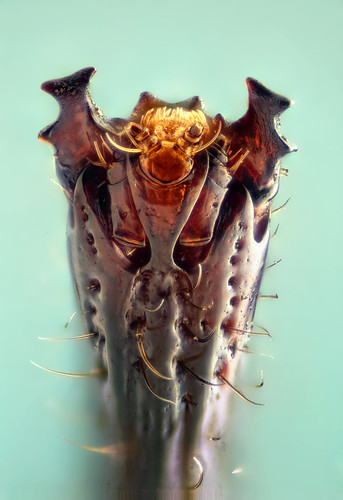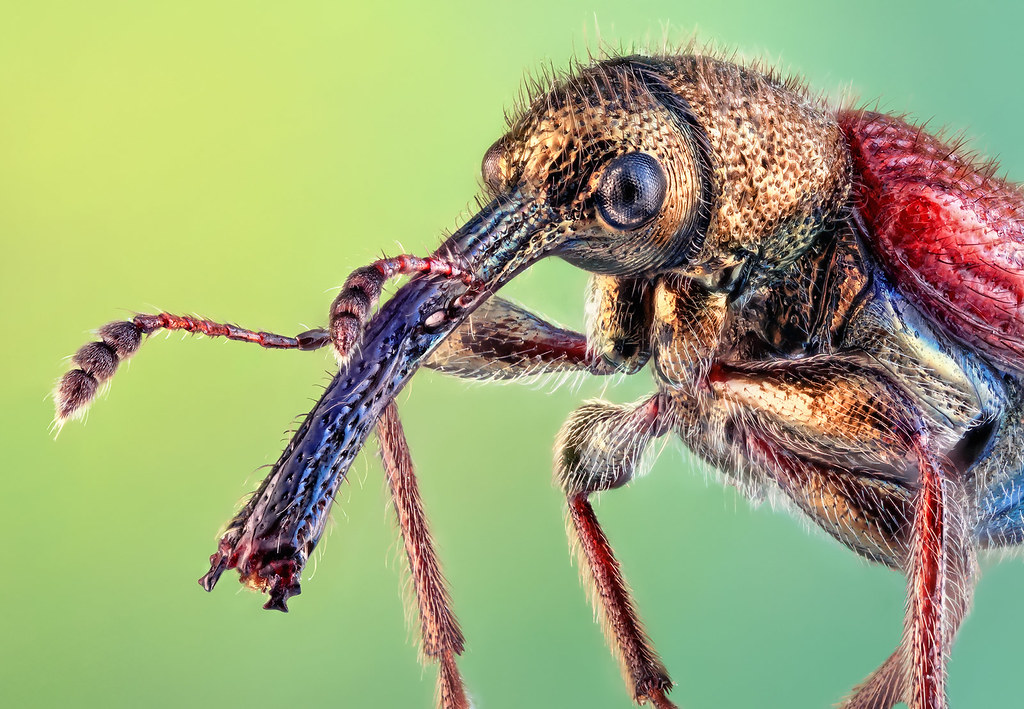
Canon 5DmkII, JML 21/3.5, Olympus 65-116mm telescopic ET, Newport linear stage, Olympus macro stand, Speedlight 270EX + 2 LED:s (Ikea: Jansjö), 121 exposures stacked in Zerene Stacker (PMAX)
Neocoenorrhinus aequatus
A 3-4mm long leaf rolling weevil. These tiny beetles use their specialized mouthparts to make precision incisions to leafs in such a way that they roll up and create a protected environment for the larvae of the beetle.
In the following link you'll find a nice study of this fascinating behavior in a different species of leaf rolling weevil: http://entnemdept.ufl.edu/creatures/mis ... ovatus.htm
I was intrigued by the interesting shape of the mandibles. To me they appear to have a "double action" design allowing them to cut while closing as well as opening (my speculation) which is something I don't recall seeing before. Below is a closer look at these, shot at 40X on sensor and somewhat cropped.
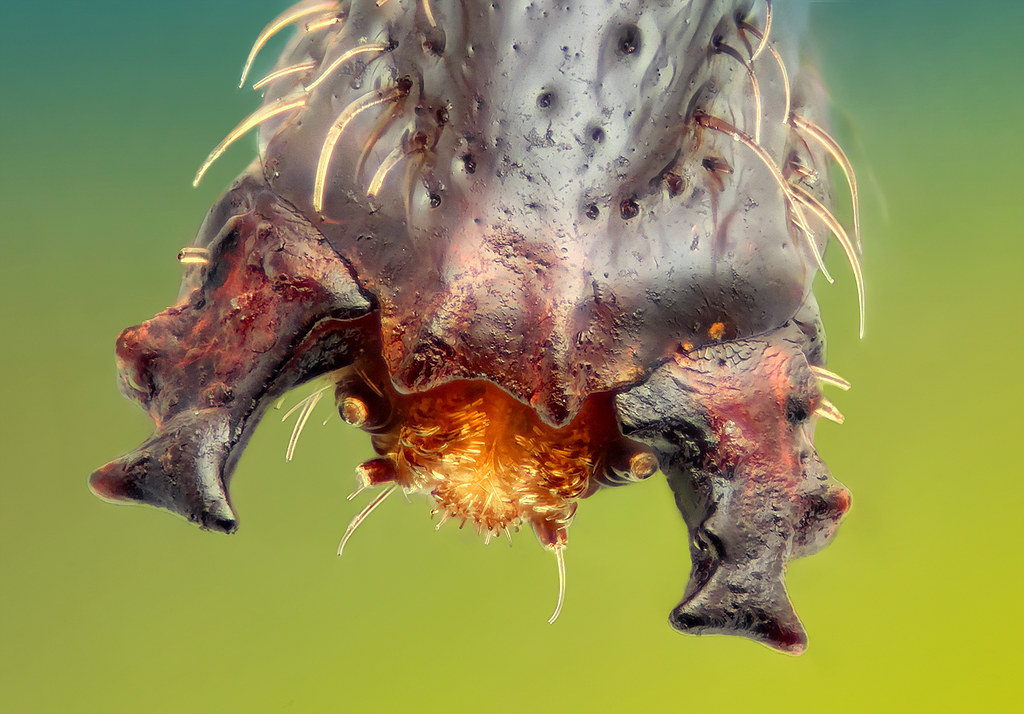
Canon 5DmkII, Nikon M Plan 40X 0.40 SLWD, Olympus 65-116mm telescopic ET, Newport linear stage, Olympus macro stand, Speedlight 270EX.
Synthetic cross eye stereogram:
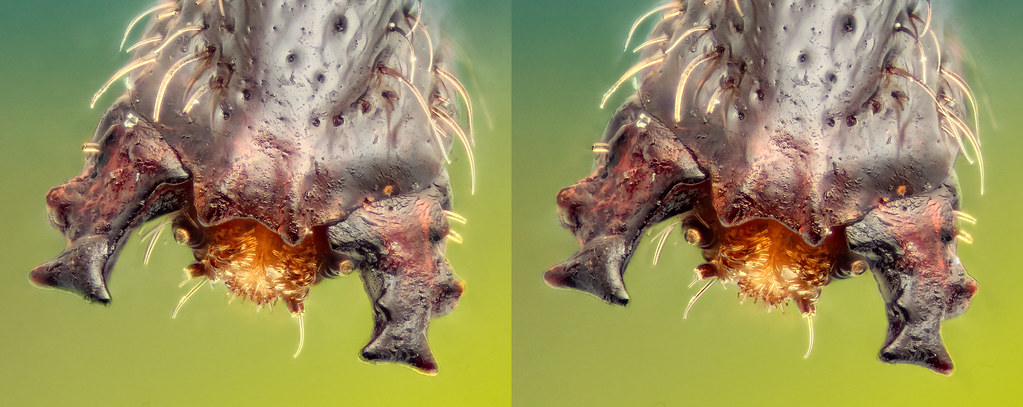
Flash version here
A couple of shots of a living specimen:
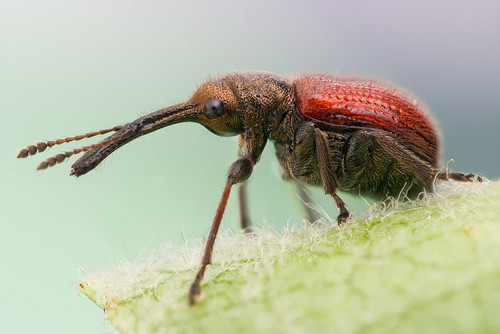

The first one is a handheld field stack (5 exposures, Micro-nikkor 105/f4 + Raynox MSN-202), the second one was made indoors under a vertical stand (Leitz Milar 40/4.5). High resolution flash stereogram of the dorsal view: here.

